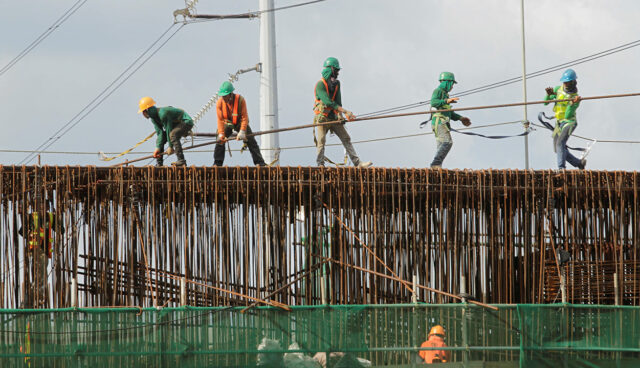Tax on online sellers eyed before Dec.

THE BUREAU of Internal Revenue (BIR) is hoping to start imposing a creditable withholding tax on partner-merchants of online platforms before the start of December, an official said.
“The process could be shorter, and we might just come up with it before the start of December. It will not be unreasonable to expect it before the start of December,” BIR Assistant Commissioner Jethro M. Sabariaga told reporters on the sidelines of the SGV Tax Symposium last week.
“The longer you withhold this release, you’re hobbling a significant portion of today’s economic transactions,” he added.
The BIR last week released the final draft of the amendments to Revenue Regulation No. 2-98 which currently does not cover income payments by online platform providers.
Under the final draft, the BIR would impose a withholding tax of 1% on one half of the gross remittances by domestic e-marketplace operators to the online merchants for the goods or services sold through their facility.
However, the withholding tax will not apply if annual total gross remittances to an online merchant for the past taxable year has not exceeded P250,000, or if the cumulative gross remittances to an online merchant in a taxable year has not yet exceeded P250,000.
Also exempted are online merchants who are part of a cooperative duly registered with the BIR with a valid Certificate of Tax Exemption.
Mr. Sabariaga said the BIR took note of the suggestions and objections to the draft rules raised by affected sectors. The BIR’s deadline for comments from stakeholders on the final draft ended on Oct. 27.
“This will all be taken into consideration and then be studied and then the final draft will be released and exposed,” he said.
Under the final draft, the BIR defined an electronic marketplace as a digital platform whose business is “to connect online consumers with online merchants, facilitate and conclude the sales, process the payment of the products, goods or services through platform, or facilitate the shipment of goods or provide logistics services and post-purchase support within such platforms, and otherwise retains oversight over the consummation of the transaction.”
These would cover marketplaces for online shopping; food delivery platforms; platforms for booking accommodations at a resort, hotel, motel and inn; and other service or product marketplaces.
The BIR had first introduced its proposal to implement a withholding tax on online sellers in April.
Since then, Mr. Sabariaga said the agency consulted with various industries to come up with the latest version of the draft.
“It’s the first exposition of the draft, you have to consider the various industries, the applicability of the withholding (tax) on the various industries, the rates, the economic provisions of it,” he added
The BIR has been seeking ways to tax the digital economy, particularly as e-commerce surged during the pandemic.
In 2022, the digital economy contributed P2.08 trillion, equivalent to 9.4% of gross domestic product. Of this, e-commerce had the highest growth at 26.5%, with its share to the economy reaching 20% or P416.12 billion.
Aside from the withholding tax on online sellers, the Marcos administration has also proposed a value-added tax on digital services.
In November 2022, the House of Representatives approved the measure seeking to impose the 12% value-added tax (VAT) on nonresident digital service providers. A similar measure is still pending before a Senate committee.
If passed into law, a 12% VAT will be imposed on the digital sale of services like online advertising, video-on-demand subscriptions, and the supply of other services which are delivered through online marketplaces, webcasts and mobile applications, among others. — Luisa Maria Jacinta C. Jocson












